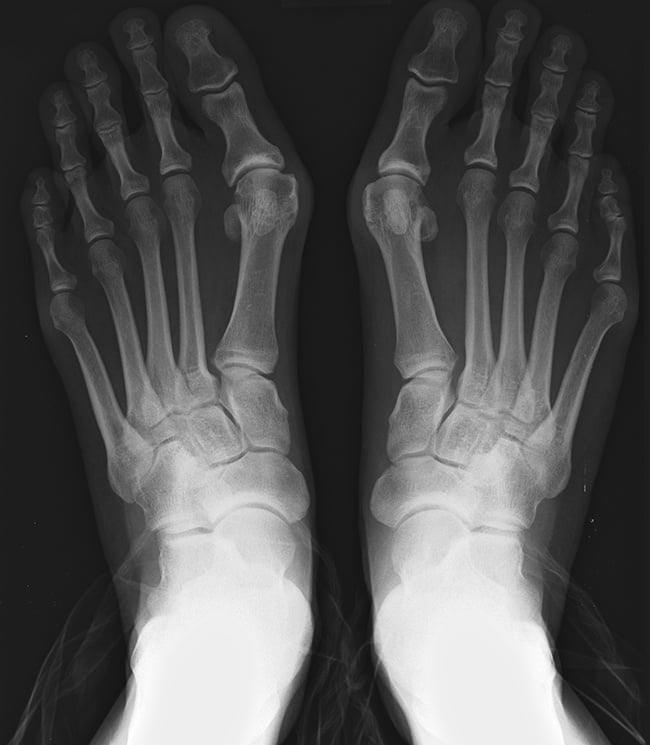Limb Lengthening Surgery: What You Need To Know

What a ground-breaking idea it was to provide a way to lengthen limbs. Limb lengthening surgery has come a long way since the days when the first procedures took place in the early 1950's.
This surgery meant freedom for people who were afflicted with crippling disabilities, congenital deformities or dwarfism. For those who had suffered the debilitating disease of polio - to congenital limb defects or dwarfism, the hope of having straight, longer limbs was a miracle.Using the invention of the external fixator that was invented by an orthopedic surgeon from Russia, the patient's bone was manually pulled apart to increase height. This procedure was successfully used during WWII, for veterans who had leg fractures that would not heal.
What is Limb Lengthening Surgery?
Limb lengthening surgery is done by cutting the bone - and over time, gently pulling the bone apart. As the bone is pulled apart, the bone, tissue, blood supply and nerves regenerate and fill the space with healthy tissue.
Who Should Have Leg Lengthening Surgery?
There are several physical situations that make surgery to lengthen the legs particularly helpful, and even necessary in some cases.
- Bone infection
- Cerebral palsy
- Congenital defect
- Dwarfism
- Trauma
Bone Infection
A bone infection can be a serious condition that can even cause a loss of limb. The infection begins when bacteria invades the bone. The bacteria can enter through the bloodstream or by entering through the outer surface of the leg. Left untreated, or if the bacteria does not respond to other treatment, damage to the local blood supply may occur and the infection will continue to spread. If the infection is treated unsuccessfully by other methods, surgery may be recommended. The area of the bone that is infected is cut, and the infected area removed.
 Cerebral Palsy
Cerebral Palsy
In some cases, those who suffer from cerebral palsy are able to gain additional mobility with leg lengthening surgery. This procedure can improve the patient's well-being and increase their ability for movement.
Congenital Defect
Congenital defects can be corrected or improved by leg lengthening surgery. When a congenital defect results in a shorter limb, surgery is the only successful method of treatment to lengthen it. Leg lengthening surgery is the procedure of choice to achieve equalization of limbs.
Dwarfism
Extremely short limbs and bowed legs can make it difficult for those with dwarfism to perform daily tasks. Leg lengthening surgery not only can help straighten legs, but also add the inches that will make daily routines easier.
Trauma
Those who have experienced severe leg trauma have benefited from limb lengthening surgery. The techniques used can help replace missing bone and lengthen or straighten bones that have been deformed by trauma. The procedure can be performed on children and adults to help get them back to leading a healthy life with the use of both limbs.
Cosmetic Limb Lengthening Surgery
Although lengthening surgery was initially reserved for congenital and health reasons - it has now become a popular cosmetic procedure. Many individuals who were born with a short stature are now considering this life-changing surgery.
- Lifestyle
- Professional success
- Psychological disorders
With today's lifestyles and social pressure, there is more awareness than ever on a person's appearance - including height. Beginning in early childhood, kids are more aware of how they look. Their height can be an area where they may feel self-conscious and their well-being may suffer. Psychological disorders of adults can be traced back their childhood - where feelings of inadequacy due to a short stature continues to manifest into adulthood.
Professional success is often-times related to a person's height. Studies have shown that the majority of CEOs are of average to above average height. It may be difficult to decipher whether it is the self-confidence that comes with above average height, or the actual height that makes a person more successful. Regardless, height can play an important part in a person's success in their chosen profession. Those who have had leg lengthening surgery are surprised at how they are viewed by others - as well as how different they feel about themselves.
If you are considering limb lengthening surgery - your first step is to have a consultation with an orthopedist who has extensive experience with this procedure. Leg lengthening surgery is a process. Following the surgery, you will have several months of ongoing care and therapy. The orthopedic surgeon you choose will help you through the surgery as well as your recovery process. Schedule a consultation with your orthopedic specialist to see if you are a candidate for this life-changing surgery.


